Context: According to National Disaster Management Authority (NDMA), several states and Union territories (UTs) are yet to implement the Incident Response System (IRS), which is crucial for disaster response.
About Incident Response System (IRS):
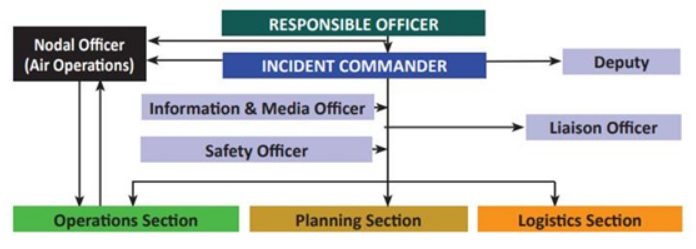 Image Source: NDMA
Image Source: NDMA
National Disaster Management Authority (NDMA)
National Disaster Reaction Force (NDRF)
|
News Source: HT
Context: Recently, World Health Organisation (WHO) issued an alert over a batch of India-made common cold syrup sold in Iraq.
More on the News
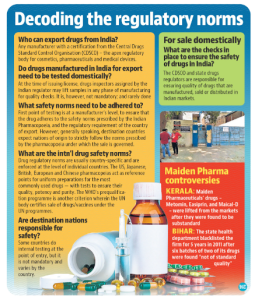 Toxic effects can include abdominal pain, vomiting, diarrhoea, inability to pass urine, headache, altered mental state and acute kidney injury which may lead to death.
Toxic effects can include abdominal pain, vomiting, diarrhoea, inability to pass urine, headache, altered mental state and acute kidney injury which may lead to death.News Source: Livemint
Context: Recently, four Members of Parliaments said that their names were included in a proposed select committee of the House for the Delhi services bill without their consent.
More on the News:
Types of Committees in Parliament:
Significance of Select Committee:
News Source: Indian Express
Context:
Recently, the Comptroller and Auditor General of India (CAG) has highlighted irregularities in registration and validation of beneficiaries under the Ayushman Bharat – Pradhan Mantri Jan Aarogya Yojana (PMJAY).
More On news:
About Ayushman Bharat – Pradhan Mantri Jan Arogya Yojana (AB-PMJAY):
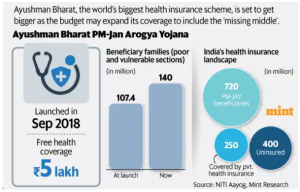
Need of the scheme:
Achievements of PM-JAY in India:
Issues highlighted in the report:
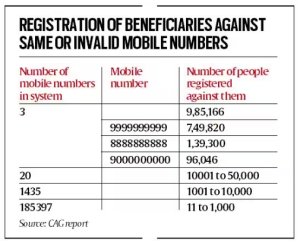 Infrastructural Issues: There is a shortage of infrastructure, equipment, doctors and the quality standards prescribed under PMJAY guidelines have not been conformed.
Infrastructural Issues: There is a shortage of infrastructure, equipment, doctors and the quality standards prescribed under PMJAY guidelines have not been conformed.Way Forward:
National Health Authority (NHA):
|
News Source: Indian Express
Context:
Recently, the Immunization drive Intensified Mission Indradhanush (IMI) 5.0, began in Coimbatore, Tamil Nadu.
More on News:
About Mission Indradhanush (MI):
Intensified Mission Indradhanush (IMI) 5.0
| Intensified Mission Indradhanush (IMI) | Intensified Mission Indradhanush (IMI) 2.0 | Intensified Mission Indradhanush (IMI) 3.0 | Intensified Mission Indradhanush (IMI) 4.0 | |
| Launch Year |
|
|
|
|
| Coverage |
|
|
|
|
News Source: The Hindu
Context:
The 133rd report of the Parliamentary Standing Committee on Personnel, Public Grievances, Law, and Justice underscores the imperative for a comprehensive strategy to alleviate case backlogs.
More on News:
Key Recommendation of the Parliamentary Panel:
|
Current Status of Case Pendency in Indian Judiciary:

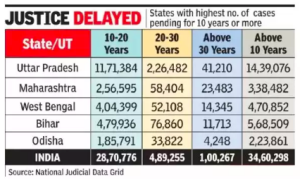 Varied Regional Backlogs: The number of pending cases varies greatly across different states.
Varied Regional Backlogs: The number of pending cases varies greatly across different states.
Reasons for High Case Pendency in the Indian Judiciary:
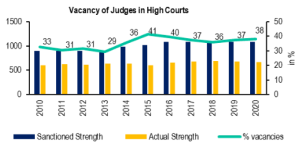 As on September 1, 2021, the Supreme Court had one vacancy out of the sanctioned strength of 34 judges.
As on September 1, 2021, the Supreme Court had one vacancy out of the sanctioned strength of 34 judges. Impact of Judicial Pendency on the Justice Delivery System in India:
Efforts Taken to Reduce Case Pendency:
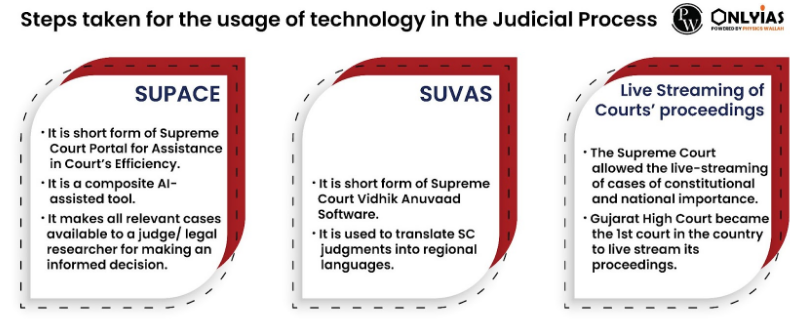
Way Forward:
|
Various Recommendations about Court Vacations:
|
News Source: The Indian Express
Context: Recently, Union Education Minister Dharmendra Pradhan launched the first State of Elementary Education in Rural India report.
Key Highlight of the Report:
News Source: India Today
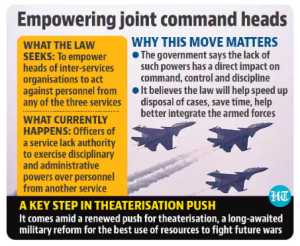
Context: Recently, Rajya Sabha passed the Inter-Services Organisation (Command, Control & Discipline) Bill, 2023.
Highlight of Bill
Feature of the Bill:
| Constituting Inter-services Organisation (ISO): |
|
| Control of Inter-services Organisations: |
|
| Role of Government: |
|
| Eligibility of Commander-in-Chief: |
|
| Function of Commander-in-Chief: |
(i) General Officer Commanding the Army, (ii) Flag Officer Commanding-in-Chief of a Naval Command, (iii) Air Officer Commanding-in-Chief of an Air Command, (iv) any other officer/authority specified in the service Acts, (v) any other officer/authority notified by the government. |
| Commanding Officer (CO): |
|
News Source: Indian Express
SC Verdict on Newsclick Shows Adherence to Due Pro...
Stay Invested: On Chabahar and India-Iran Relation...
Credit Rating Agencies, Impact on India’s De...
Catapulting Indian Biopharma Industry
Globalisation Under Threat, US Import Tariffs Have...
Global Report on Hypertension, Global Insights and...
<div class="new-fform">
</div>
